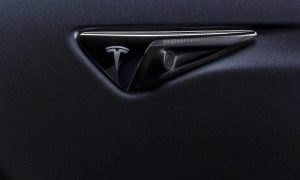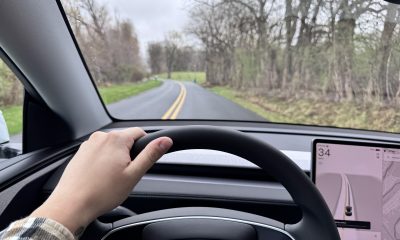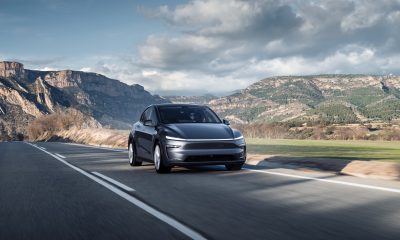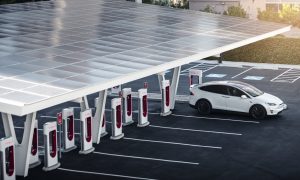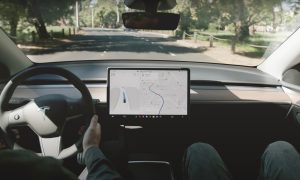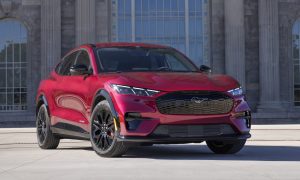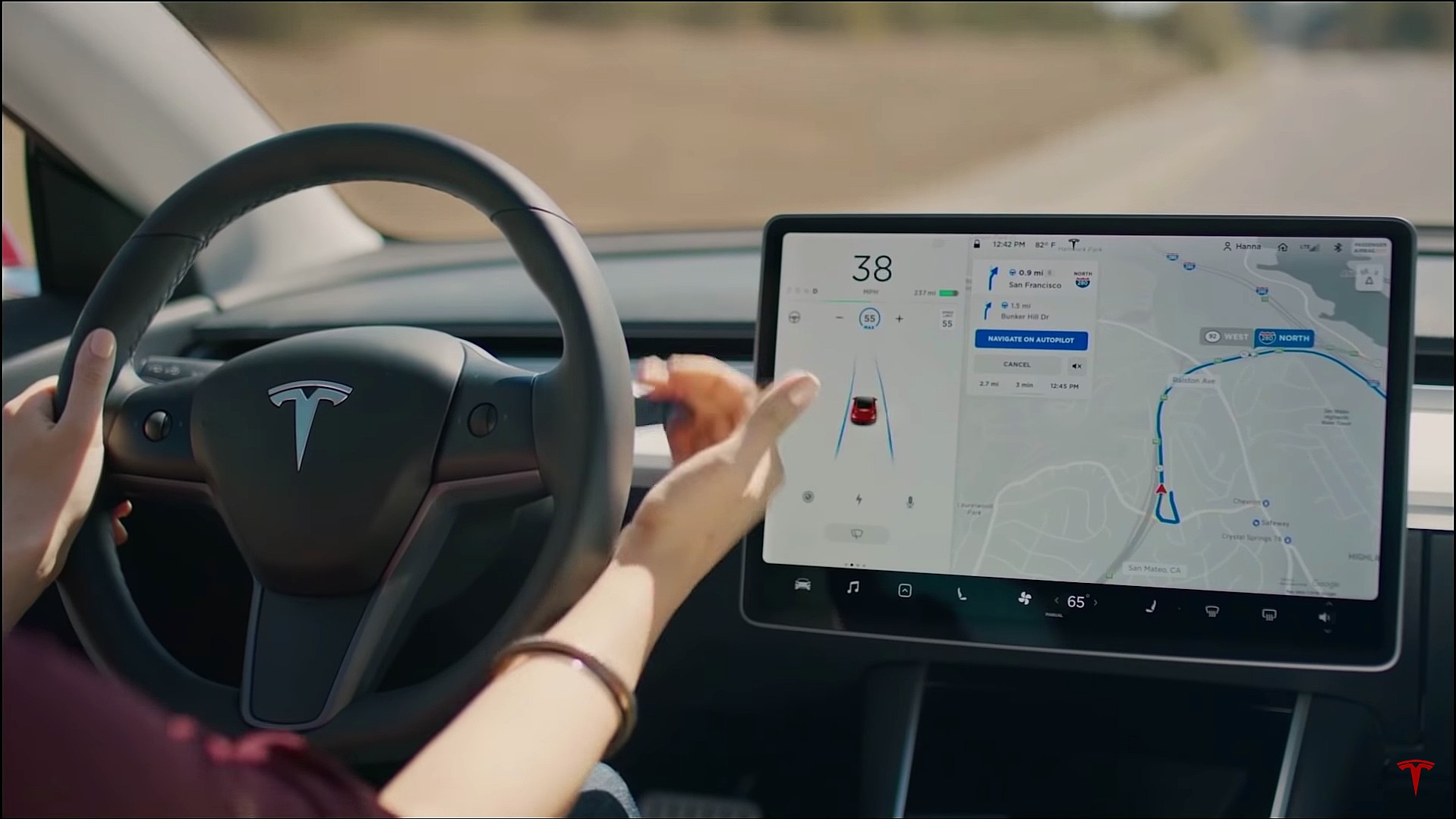

News
Ford BlueCruise, GM SuperCruise ranked as best Driver Assistance systems, Tesla Autopilot ranks 7th
Ford’s BlueCruise and General Motors’ SuperCruise were ranked in the top two spots in Consumer Reports’ recent analysis of twelve Active Driving Assistance Systems, while Tesla Autopilot was ranked seventh.
Among the manufacturers involved in the study, Ford and GM performed better than Mercedes-Benz, BMW, Toyota/Lexus, Volkswagen/Audi, Tesla, Rivian, Nissan/Infinity, Honda/Acura, Volvo/Polestar, and Hyundai/Kia/Genesis. Ford and GM’s driver monitoring systems were also lauded during CR’s 2022 testing.
Systems were tested around a track at CR’s Auto Test Center and on a 50-mile loop on public roads from September to December 2022. Each system had forty separate tests, and was evaluated in five specific categories: capability and performance, keeping the driver engaged, ease of use, clear when safe to use, and unresponsive driver.
According to the report directly from CR, Ford and GM’s ADAS options use “direct driver monitoring systems,” or DDMS, that require driver eyes to remain on the road, even while actions like steering, acceleration, and braking are being automated by the vehicles. These systems are crucial in CR’s grading scale, and the firm said it awards extra points to options that hold drivers accountable with DDMS. Additionally, systems that do not have DDMS will have points deducted.
Ford BlueCruise (Credit: Ford)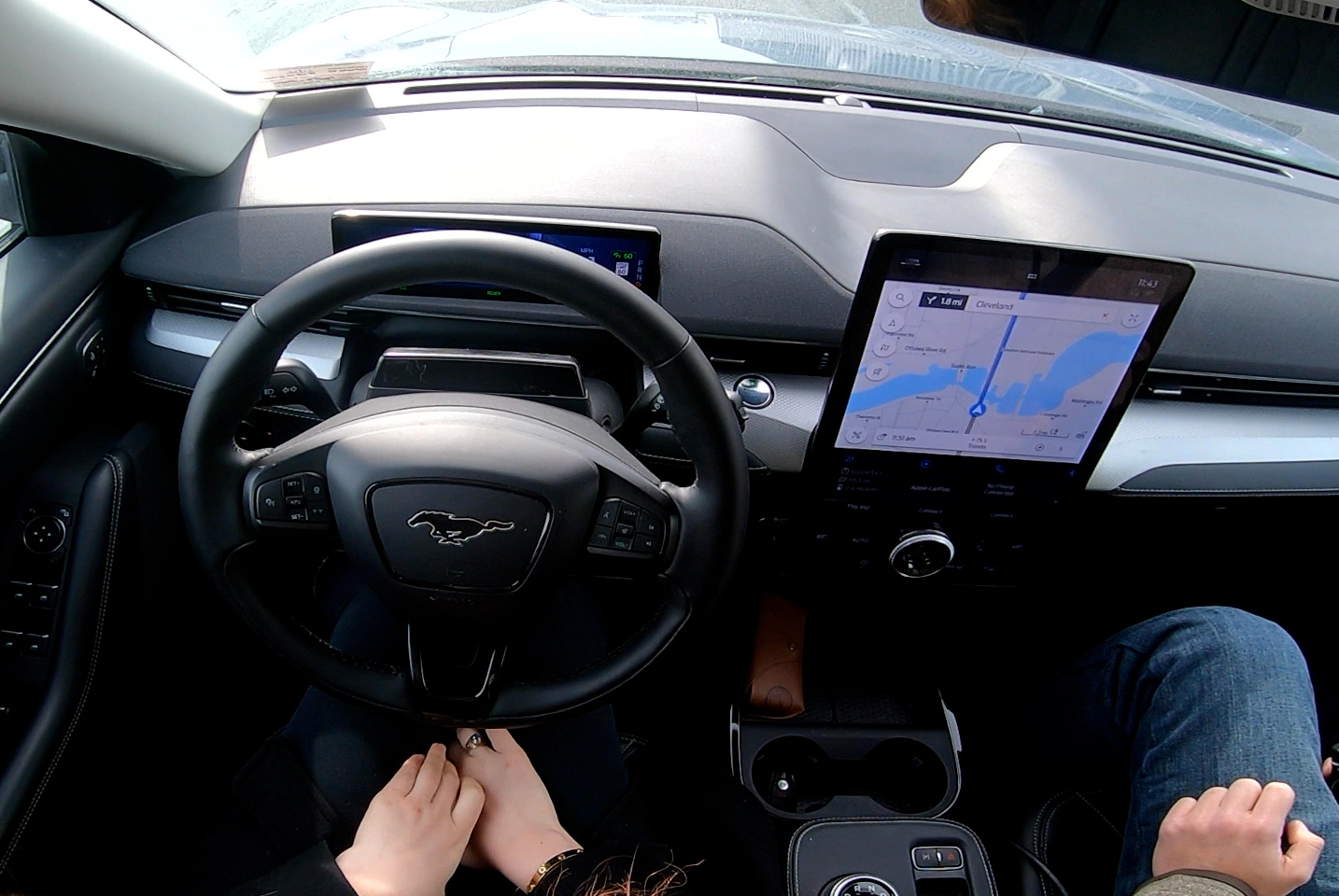
Here are the gradings and ratings:
- Ford BlueCruise/Lincoln ActiveGlide – 84
- Chevrolet/GMC/Cadillac/General Motors Super Cruise – 75
- Mercedes-Benz Driver Assistance – 72
- BMW Driving Assistance Professional – 69
- Toyota Safety Sense 3.0/Lexus Safety System+ 3.0 – 65
- Volkswagen Travel Assist/Audi Adaptive Cruise Assist – 62
- Tesla Autopilot – 61
- Rivian Highway Assist – 59
- Nissan/Infiniti ProPILOT Assist – 58
- Honda Sensing/Acura AcuraWatch – 58
- Volvo/Polestar Pilot Assist – 53
- Hyundai/Kia/Genesis Highway Driving Assist – 47
The Elephant in the Room: Where Tesla Fell Short, according to CR
Tesla was given the following grades in the five categories that were assessed:
- Capabilities and Performance – 9/10
- Keeping Driver Engaged – 3/10
- Ease of Use – 5/10
- Clear When Safe to Use – 3/10
- Unresponsive Driver – 4/10
CR said that Tesla has fallen from its second-place spot in 2020 to mid-pack because the automaker “hasn’t changed Autopilot’s basic functionality much since it first came out, instead just adding more features to it.”
“After all this time, Autopilot still doesn’t allow collaborative steering and doesn’t have an effective driver monitoring system,” Jake Fisher of CR said. “While other automakers have evolved their ACC (adaptive cruise control) and LCA (lane-centering assistance) systems, Tesla has simply fallen behind.”
One portion of the testing where CR was most critical was when Tesla and Mercedes-Benz’s systems allowed the vehicle to drive down the highway completely hands-free for roughly thirty seconds before audible alerts were given. Kelly Funkhouser, CR’s Manager of Vehicle Technology, estimated that it was roughly a half mile on a highway before the vehicles alerted the driver to pay attention to the road.
Tesla does have cabin cameras that monitor driver inattentiveness. The Model Y Owners Manual says the following:
“The cabin camera can determine driver inattentiveness and provide you with audible alerts, to remind you to keep your eyes on the road when Autopilot is engaged. By default, images and video from the camera do not leave the vehicle itself and are not transmitted to anyone, including Tesla, unless you enable data sharing. If you enable data sharing and a safety critical event occurs (such as a collision), Model Y shares short cabin camera video clips with Tesla to help us develop future safety enhancements and continuously improve the intelligence of features that rely on the cabin camera.”
In May 2021, Tesla activated camera-based driver monitoring. “The cabin camera above your rearview mirror can now detect and alert driver inattentiveness while Autopilot is engaged,” Tesla said in the notes. Tests of Tesla’s driver monitoring tests showed the system was effective in some instances, especially when looking at cell phones, with alerts coming in 15 seconds.
Tesla was complemented with its lane centering, as it gave smooth steering inputs and kept the car near the center of the lane on straight and curved roads.
However, more compliments came from CR with Tesla’s Adaptive Cruise Control. “The ACC function of Tesla’s Autopilot system is capable of stopping the car, such as at a red light behind another vehicle, for an unlimited amount of time before resuming again. But without an adequate driver monitoring camera,” Funkhouser said,” this is potentially unsafe as there’s no way to know whether the driver is paying attention when the vehicle starts moving again.”
Tesla’s system apparently differs from GM and Ford’s in the sense that BlueCruise and Super Cruise as “both point infrared cameras at driver faces and sound an alert if the driver stops paying attention to the road, even if just for a few seconds.”
You can read Consumer Reports’ full report here.
I’d love to hear from you! If you have any comments, concerns, or questions, please email me at joey@teslarati.com. You can also reach me on Twitter @KlenderJoey, or if you have news tips, you can email us at tips@teslarati.com.
News
Tesla China breaks 8-month slump by selling 71,599 vehicles wholesale in June
Tesla China’s June numbers were released by the China Passenger Car Association (CPCA) on Tuesday.
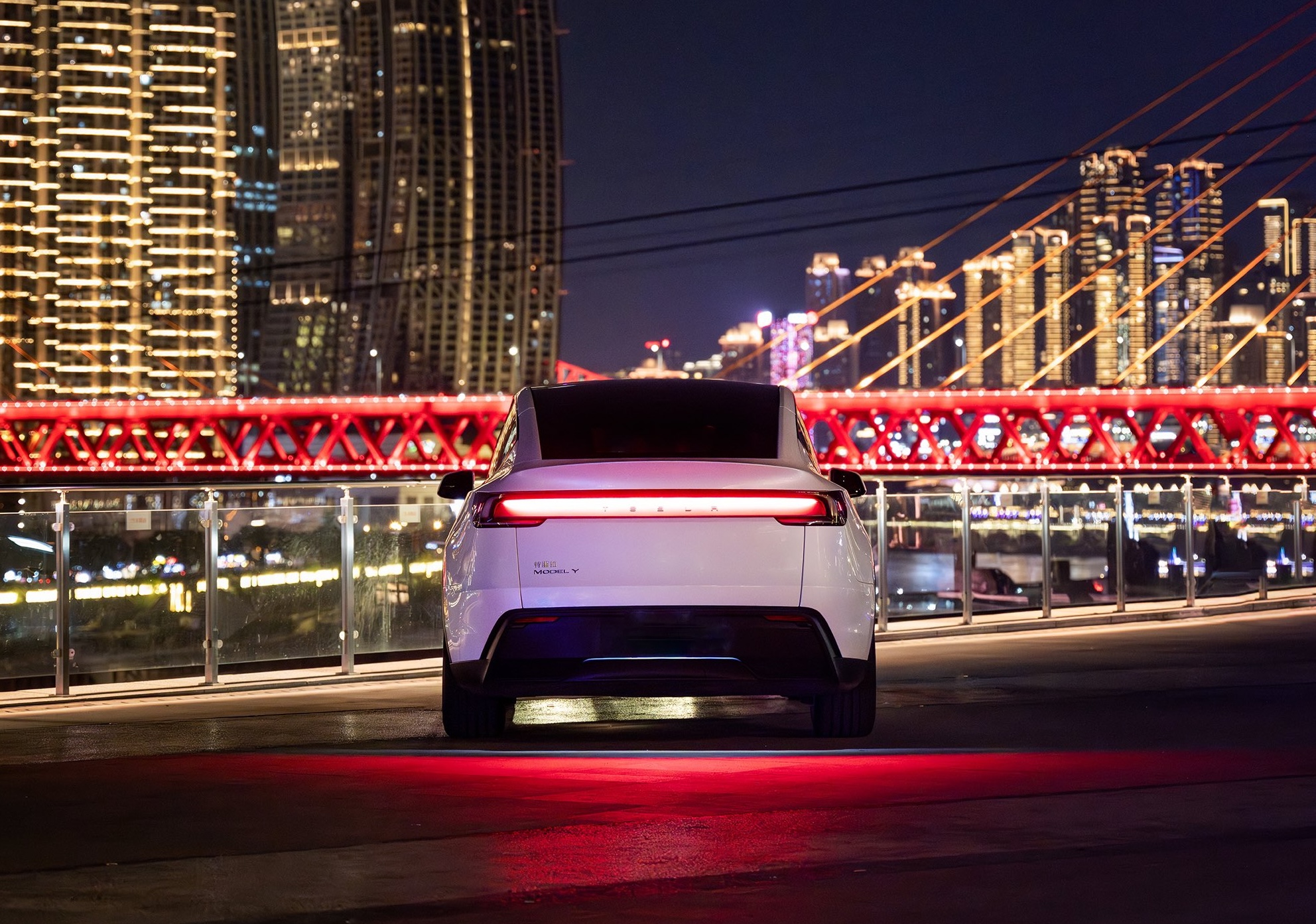
Tesla China was able to sell 71,599 vehicles wholesale in June 2025, reversing eight consecutive months of year-over-year declines. The figure marks a 0.83% increase from the 71,599 vehicles sold wholesale in June 2024 and a 16.1% jump compared to the 61,662 vehicles sold wholesale in May.
Tesla China’s June numbers were released by the China Passenger Car Association (CPCA) on Tuesday.
Tesla China’s June results in focus
Tesla produces both the Model 3 and Model Y at its Shanghai Gigafactory, which serves as the company’s primary vehicle export hub. Earlier this year, Tesla initiated a changeover for its best-selling vehicle, the Model Y, resulting in a drop in vehicle sales during the first and second quarters.
Tesla’s second-quarter China sales totaled 191,720 units including exports. While these numbers represent a 6.8% year-over-year decline for Tesla China, Q2 did show sequential improvement, rising about 11% from Q1 2025, as noted in a CNEV Post report.
For the first half of the year, Tesla sold 364,474 vehicles wholesale. This represents a 14.6% drop compared to the 426,623 units sold wholesale in the first half of 2024.
China’s competitive local EV market
Tesla’s position in China is notable, especially as the new Model Y is gaining ground in the country’s BEV segment. That being said, Tesla is also facing competition from impressive local brands such as Xiaomi, whose new YU7 electric SUV is larger and more affordable than the Model Y.
The momentum of the YU7 is impressive, as the vehicle was able to secure 200,000 firm orders within three minutes and over 240,000 locked-in orders within 18 hours. Xiaomi’s previous model, the SU7 electric sedan, which is aimed at the Tesla Model 3, also remains popular, with June deliveries surpassing 25,000 units for the ninth straight month.
While China’s EV market is getting more competitive, Tesla’s new Model Y is also ramping its production and deliveries. Needless to say, Tesla China’s results for the remaining two quarters of 2025 will be very interesting.
Elon Musk
Tesla reveals it is using AI to make factories more sustainable: here’s how
Tesla is using AI in its Gigafactory Nevada factory to improve HVAC efficiency.

Tesla has revealed in its Extended Impact Report for 2024 that it is using Artificial Intelligence (AI) to enable its factories to be more sustainable. One example it used was its achievement of managing “the majority of the HVAC infrastructure at Gigafactory Nevada is now AI-controlled” last year.
In a commitment to becoming more efficient and making its production as eco-friendly as possible, Tesla has been working for years to find solutions to reduce energy consumption in its factories.
For example, in 2023, Tesla implemented optimization controls in the plastics and paint shops located at Gigafactory Texas, which increased the efficiency of natural gas consumption. Tesla plans to phase out natural gas use across its factories eventually, but for now, it prioritizes work to reduce emissions from that energy source specifically.
It also uses Hygrometric Control Logic for Air Handling Units at Giafactory Berlin, resulting in 17,000 MWh in energy savings each year. At Gigafactory Nevada, Tesla saves 9.5 GWh of energy through the use of N-Methylpyrrolidone refineries when extracting critical raw material.
Perhaps the most interesting way Tesla is conserving energy is through the use of AI at Gigafactory Nevada, as it describes its use of AI to reduce energy demand:
“In 2023, AI Control for HVAC was expanded from Nevada and Texas to now include our Berlin-Brandenburg and Fremont factories. AI Control policy enables HVAC systems within each factory to work together to process sensor data, model factory dynamics, and apply control actions that safely minimize the energy required to support production. In 2024, this system achieved two milestones: the majority of HVAC infrastructure at Gigafactory Nevada is now AI-controlled, reducing fan and thermal energy demand; and the AI algorithm was extended to manage entire chiller plants, creating a closed-loop control system that optimizes both chilled water consumption and the energy required for its generation, all while maintaining factory conditions.”
Tesla utilizes AI Control “primarily on systems that heat or cool critical factory production spaces and equipment.” AI Control communicates with the preexisting standard control logic of each system, and any issues can be resolved by quickly reverting back to standard control. There were none in 2024.
Tesla says that it is utilizing AI to drive impact at its factories, and it has proven to be a valuable tool in reducing energy consumption at one of its facilities.
Elon Musk
Tesla analysts believe Musk and Trump feud will pass
Tesla CEO Elon Musk and U.S. President Donald Trump’s feud shall pass, several bulls say.

Tesla analysts are breaking down the current feud between CEO Elon Musk and U.S. President Donald Trump, as the two continue to disagree on the “Big Beautiful Bill” and its impact on the country’s national debt.
Musk, who headed the Department of Government Efficiency (DOGE) under the Trump Administration, left his post in May. Soon thereafter, he and President Trump entered a very public and verbal disagreement, where things turned sour. They reconciled to an extent, and things seemed to be in the past.
However, the second disagreement between the two started on Monday, as Musk continued to push back on the “Big Beautiful Bill” that the Trump administration is attempting to sign into law. It would, by Musk’s estimation, increase spending and reverse the work DOGE did to trim the deficit.
Every member of Congress who campaigned on reducing government spending and then immediately voted for the biggest debt increase in history should hang their head in shame!
And they will lose their primary next year if it is the last thing I do on this Earth.
— Elon Musk (@elonmusk) June 30, 2025
President Trump has hinted that DOGE could be “the monster” that “eats Elon,” threatening to end the subsidies that SpaceX and Tesla receive. Musk has not been opposed to ending government subsidies for companies, including his own, as long as they are all abolished.
How Tesla could benefit from the ‘Big Beautiful Bill’ that axes EV subsidies
Despite this contentious back-and-forth between the two, analysts are sharing their opinions now, and a few of the more bullish Tesla observers are convinced that this feud will pass, Trump and Musk will resolve their differences as they have before, and things will return to normal.
ARK Invest’s Cathie Wood said this morning that the feud between Musk and Trump is another example of “this too shall pass:”
BREAKING: CATHIE WOOD SAYS — ELON AND TRUMP FEUD “WILL PASS” 👀 $TSLA
She remains bullish ! pic.twitter.com/w5rW2gfCkx
— TheSonOfWalkley (@TheSonOfWalkley) July 1, 2025
Additionally, Wedbush’s Dan Ives, in a note to investors this morning, said that the situation “will settle:”
“We believe this situation will settle and at the end of the day Musk needs Trump and Trump needs Musk given the AI Arms Race going on between the US and China. The jabs between Musk and Trump will continue as the Budget rolls through Congress but Tesla investors want Musk to focus on driving Tesla and stop this political angle…which has turned into a life of its own in a roller coaster ride since the November elections.”
Tesla shares are down about 5 percent at 3:10 p.m. on the East Coast.
-

 Elon Musk2 days ago
Elon Musk2 days agoTesla investors will be shocked by Jim Cramer’s latest assessment
-

 News7 days ago
News7 days agoTesla Robotaxi’s biggest challenge seems to be this one thing
-

 News2 weeks ago
News2 weeks agoTesla’s Grok integration will be more realistic with this cool feature
-

 Elon Musk2 weeks ago
Elon Musk2 weeks agoElon Musk slams Bloomberg’s shocking xAI cash burn claims
-

 News2 weeks ago
News2 weeks agoTesla China roars back with highest vehicle registrations this Q2 so far
-

 News2 weeks ago
News2 weeks agoTexas lawmakers urge Tesla to delay Austin robotaxi launch to September
-

 News2 weeks ago
News2 weeks agoTesla dominates Cars.com’s Made in America Index with clean sweep
-

 Elon Musk1 week ago
Elon Musk1 week agoFirst Look at Tesla’s Robotaxi App: features, design, and more


